HOW TO WATER YOUR TREES PROPERLY
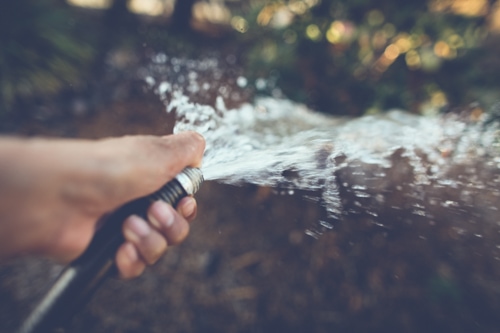
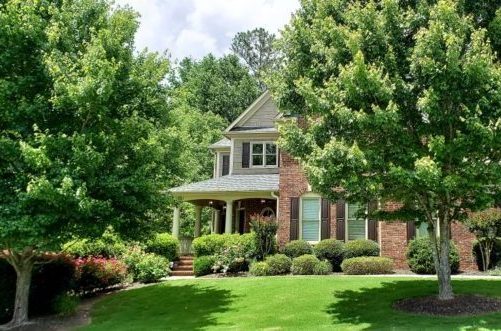
When it comes to watering your tree properly, it can be a bit tricky — as trees can suffer if you water too little or even if you water too much. So how can you tell if your tree is suffering from a lack or an excess of water? Unfortunately, signs of underwatering and overwatering your trees can be similar when it comes to the canopy and foliage, but do not stress because fortunately, there is a simple way to figure out which issue you have. The ground! Is it constantly damp or is it dry? Plain and simple.
UNDERWATERED TREE SYMPTOMS
- thinning canopy
- browning or yellowing of foliage (off-season fall colors)
- wilted or curling leaves
- untimely leaf drop
- dead branches
- small leaves
- slow growth
- pest infestation
Drought or underwatered trees are fairly easy to detect. For one, they don’t look healthy. The most obvious feature is that their canopy will be sparse, and their leaves will look an untimely fall color with wilting or curling. Then if you notice pests, it is definitely time to change your watering protocol and give your tree a nutrient boost through our Tree Health Care system.
When the tree’s drip zone (ground underneath the canopy) is devoid of water, the fine roots, which play an important role in water and nutrient absorption, begin to die back, thus affecting the health of the tree and displaying itself in the canopy and foliage. Eventually, if the tree continues to suffer from underwater stress, then the large, anchoring roots will dry up and die off as well. That’s when large trees become dangerous, as they become a likely candidate for tree failure.
OVERWATERED TREE SYMPTOMS
- frequent wet ground around the tree
- brittle leaves
- brown edges
- gray or black spotting on the leaves
- wilted or curling leaves
- yellowing or light green foliage
- untimely leaf drop
When a tree is receiving an excessive amount of water, the tree suffocates. Trees aide the planet with their ability to absorb carbon dioxide from the air and release fresh oxygen. But surprise, surprise — trees need oxygen too! The fine roots are also responsible for absorbing oxygen from tiny air pockets in the soil. If the tree is receiving too much water, water fills the air pockets, making it hard for the tree to breathe. The roots then produce methane, hydrogen, and nitrogen gases that choke out the roots, preventing them from performing their important duties for the tree.
HOW TO PROPERLY WATER YOUR TREE
HOW MUCH WATER FOR YOUR TREE
There’s a general rule of thumb for the amount of water to provide for your trees that may come as a shocker for most people — 10 gallons of water for every inch of trunk diameter! So if you do the math, a young tree with a skinny 2-inch trunk diameter that you just purchased from the nursery in a 5-gallon container needs 20 gallons of water according to that theory! Overkill? Possibly — although some arborists may argue otherwise. However, from our experience in the industry, as well as caring for our own personal trees, a newly-planted young tree does not need that hefty amount of water. So our verdict is…save your water!
As mentioned prior, you can learn how much water your tree needs by a simple screwdriver test. A majority of a tree’s roots sit in the top 12 inches of the ground, especially in urban settings where soil compaction and development can hinder deep root growth. When watering your tree, deep watering is the goal. And slow watering is the most efficient way to reach that goal. So provide enough water for your tree until your screwdriver, if you’re doing a screwdriver test, can easily be pushed all the way down. Then water a bit more, and then your tree will be a happy tree.
RECOMMENDED METHODS TO WATER YOUR TREE
Hose. Since trees require so much water, standing there with your hose will be extremely time-consuming. In addition, watering with the hose on high pressure will shower the tree with more water than the soil can absorb, which will result in wasted water run-off. A more efficient method in using a hose is to turn it on as low as possible so water is slowly dribbling out. After 20-30 minutes, move it to a new location under the canopy. Keep repeating until the tree’s drip zone has been sufficiently watered. Depending on the size of the tree, this may take 1-2 hours — so make sure to set your timer.
Soaker Hose. An easier and efficient method is using a soaker hose that is placed under the tree’s canopy. Soaker hoses are porous and allow water to slowly seep out. This gradual release of water minimizes wasted water and maximizes water absorption. The soaker hose should be placed in a circular pattern under the canopy of the tree and turned on for an hour or more. The goal is for the water to penetrate eight inches into the ground, which can easily be determined using the screwdriver test. Push an 8-inch screwdriver into the ground. If it pushes easily all the way, the ground is moist. Easy does it!
Dripline. The easiest method to watering your tree is using a drip irrigation system. However, it is also one of the most difficult to install. But once installation is complete, the rest is a no-brainer. Just like with a soaker hose, the dripline should be set in a circle under the canopy and run for an hour or more, contingent on factors such as the tree’s size, species, and climate.
Sprinkler. Sprinklers are another common system for watering landscape. Like the drip system, installation can be time-consuming and difficult, but once completed, the work is automatically performed for you and can be adjusted according to the tree and the season. Sprinklers are great for watering lawns and any area of land that is mostly covered with landscaping, however when they are used to water trees that are not heavily surrounded by other plants, then weeds will become an issue.
Bucket. If you need an easy method to water your tree that doesn’t require much time and doesn’t require the purchase of any additional “fancy” tools, you can always use the good ol’ 5-gallon bucket that is hanging out in your garage. Drill holes on the bottom portion of the bucket and place it in the tree’s drip zone. Fill the bucket with water and let it empty out. Then move the bucket to a new location, and repeat the previous step until the tree has received a sufficient amount of water.
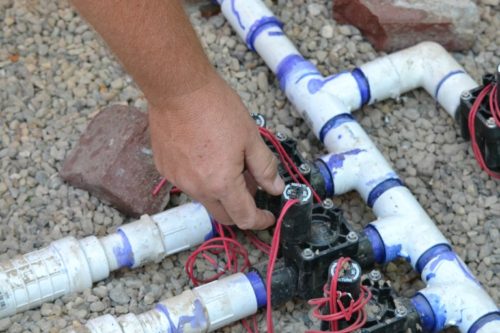

HOW OFTEN DOES YOUR TREE NEED TO BE WATERED?
Newly planted trees will require more water during the first 1-2 years. Their root structure is limited to a smaller area, and it needs to expand in order for the tree to thrive. However, when a tree is freshly transplanted, it undergoes a period of shock — which is why you may see leaf drop or signs of deterioration. Have no fear though. With proper care and patience, your tree will bounce back.
During the first two weeks after being planted, new trees need to be watered at least three times a week over the root ball, or even daily in dry, hot weather. Then, for the next ten weeks, this can be reduced to 1-3 times a week. For the rest of that first year up until the fifth year, the tree will need to be watered twice a month, or even weekly during times of heat or drought. For the first two years, water needs to be concentrated over the root ball. After that, the watering zone can be expanded to accommodate the growing root system.
YEAR ONE
Weeks 1+2
Weeks 3 -12
Rest of 1st Year
Water 3-7 times a week over the root ball.
Water 1-3 times a week depending on the weather over the root ball.
Water 2 times a month over the root ball.
YEAR TWO
Hotter Months
Colder Months
Water weekly or bi-weekly over the root ball.
Provide supplemental water when necessary.
YEAR THREE
Hotter Months
Colder Months
Water weekly or bi-weely to an area twice the width of the root ball.
Provide supplemental water when necessary.
Once a tree is established and mature, they will have such extensive roots that they are able to tap into deeper groundwater or may even creep into your neighbor’s property to take advantage of their water system. However, if it has not rained in at least a month, then supplemental water will still need to be provided. Remember that a water-deprived tree is weaker and susceptible to pests and disease, so keeping it as healthy as possible is key to its longevity.
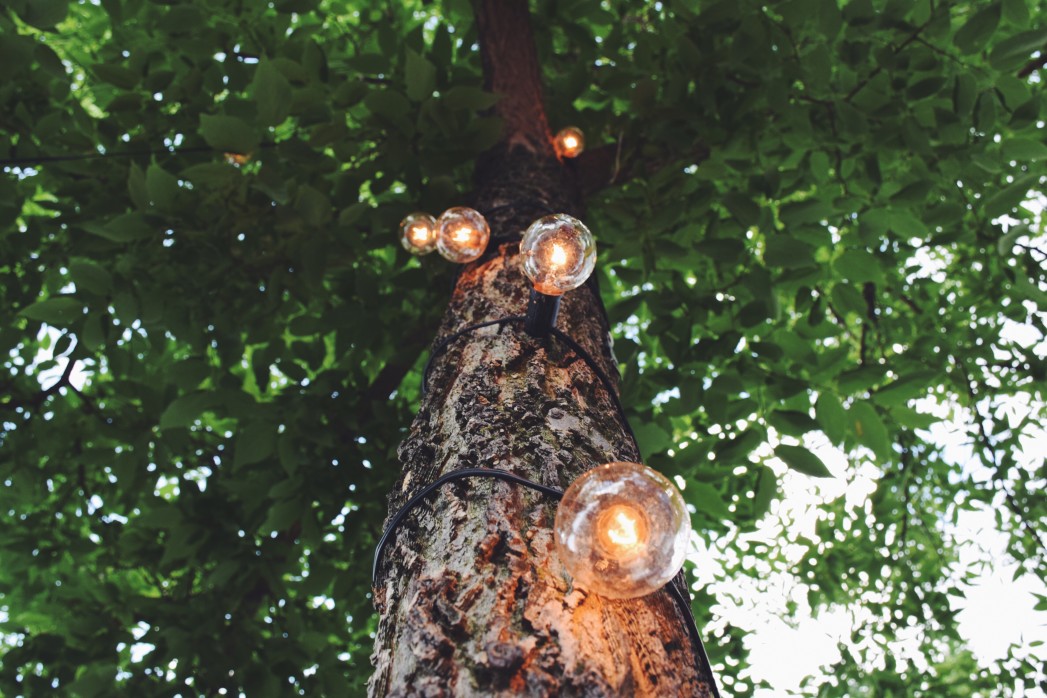
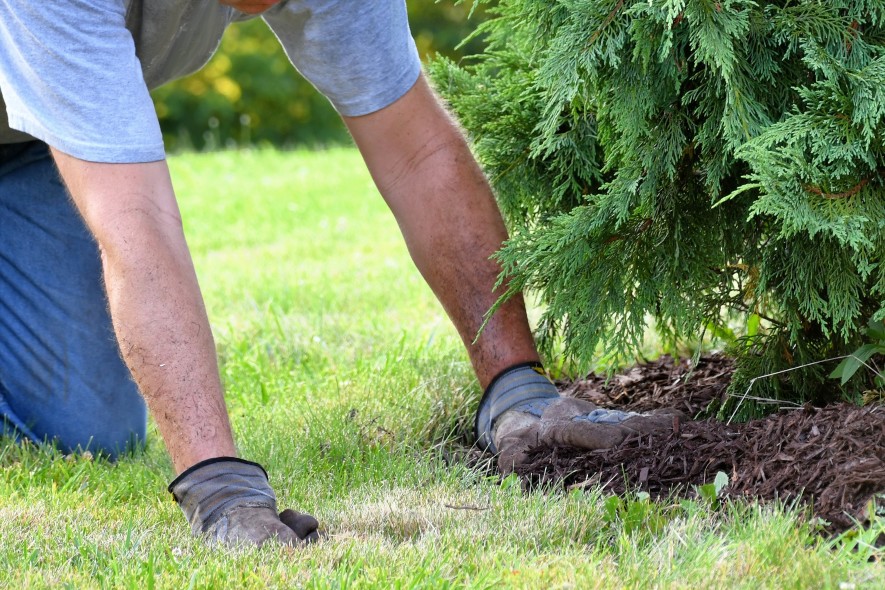
OTHER MEASURES TO HELP YOUR TREE
MULCH
Adding mulch as groundcover for your trees has many benefits that should not be overlooked. For starters, adding mulch helps prevent soil compaction by buffering the impact of water that can result from watering with a hose or from hard rain. Remember, trees get oxygen from tiny air pockets in the soil, so its important to keep the soil from getting too compacted. Mulch also acts like a layer of protection by helping to stabilize the ground temperature during extreme weather. During the hotter summer months, the ground will be slightly cooler, which results in less water evaporation and more comfortable roots. Happy roots, happy tree.
When applying mulch, it is important not to be too excessive. Trees only need 2-3 inches of mulch. Anything more will be asking for an array of problems, such as suffocation of the tree’s roots, wasted water, and a higher susceptibility to rodent pests and diseases. Therefore, avoid creating a mulch volcano. As the name implies, do not place down so much mulch that it ends up looking like a volcano around your tree.
CAMBISTAT
Cambistat is a plant health care additive developed by Rainbow Treecare Scientific Advancements that is quickly growing in popularity in the landscape and arboricultural industries. Cambistat was created primarily as a growth regulator, but it has several side results that are so beneficial for trees that people across the nation are raving about this product. Since the tree shifts its focus from above-ground growth, its energy is applied more towards underground growth with the roots, more specifically fine roots, which are primarily responsible for water, nutrient, and oxygen absorption. The end result is an overall healthier tree with greener foliage, increased resistance to disease, and increased resistance to heat and drought.
Even though Cambistat is a growth regulator, any size tree, big or small, would benefit from it. Many people use Cambistat to help control the size of their mature trees, but why would anyone use it on a young tree? Aren’t people anxious for a teeny, weeny, baby tree to grow to a large, lush adult tree? Yes, but remember that new transplants don’t grow much anyways the first two years after being planted so they could focus on root growth. Therefore, adding Cambistat during this period would be great timing so it could expedite the root growth process.
The effects of Cambistat can last for up to three years. After that time, you can choose to have it reapplied or skip reapplications so that a young tree can now refocus on trunk and limb growth. Either way, the tree will now have a stronger root system that is well set up for water absorption.

LOOKING FOR A TREE SERVICE COMPANY?
CONTACT LC TREE SERVICE TODAY FOR YOUR FREE ESTIMATE.

The post HOW TO WATER YOUR TREES PROPERLY first appeared on San Diego Tree Trimmers – LC Tree Service.
HELPING TREES IN THE SUMMER HEAT

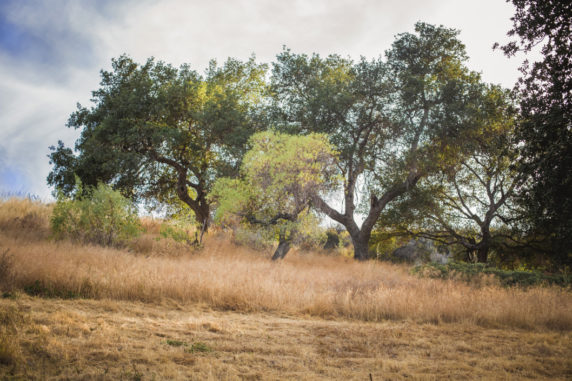
When the summer arrives in San Diego, some trees and plants may fare well, but others, unfortunately, succumb to the summer heat. While coastal San Diego communities have little to worry about with heat-related tree “fatalities,” inland neighborhoods such as El Cajon and Santee, typically have about four months of high temperatures in the 80’s, 90’s, and 100’s. Many people can shelter indoors to enjoy the cool AC or take a dip in the pool or beach — but what about the trees?
Trees and plants suffer in high temperatures for two short and simple main reasons:
- lack of water
- small root system
Which trees are most vulnerable in the summer?
NEW TRANSPLANTS. Trees that have just been planted into the ground have a smaller root system that is limited to the size of the container they came in. When you first plant a tree, you may notice…well nothing. No growth. Nothing during the first year. And nothing much in the second year. Nada! That is because the growing action is occurring underground with the roots. In order for the new tree to survive and thrive, its roots will need expand well beyond its current space. Roots are opportunistic and will grow where the nutrients and water are available. Please see the following section on how to properly water new trees.
POTTED TREES. The roots of these trees have the unfortunate disadvantage of not being able to travel past its borders. They’re stuck! So potted trees need extra love and care in the summer heat. Depending on the species, some trees need to be watered daily — sometimes even twice a day when the heat gets extreme. A general rule of thumb is to water when the first inch of soil is dry in the pot.
SICK OR INFESTED TREES. When a tree is inflicted with disease or pests, then high temperatures will just be added stress to an already struggling organism. Therefore, it’s important to make attempts to manage any tree infestation or infection before the summer heat arrives. If you suspect that your tree may be suffering from disease or pests, please contact LC Tree Service for information on our Tree Health Care treatments, so we can help you get your trees healthy again.
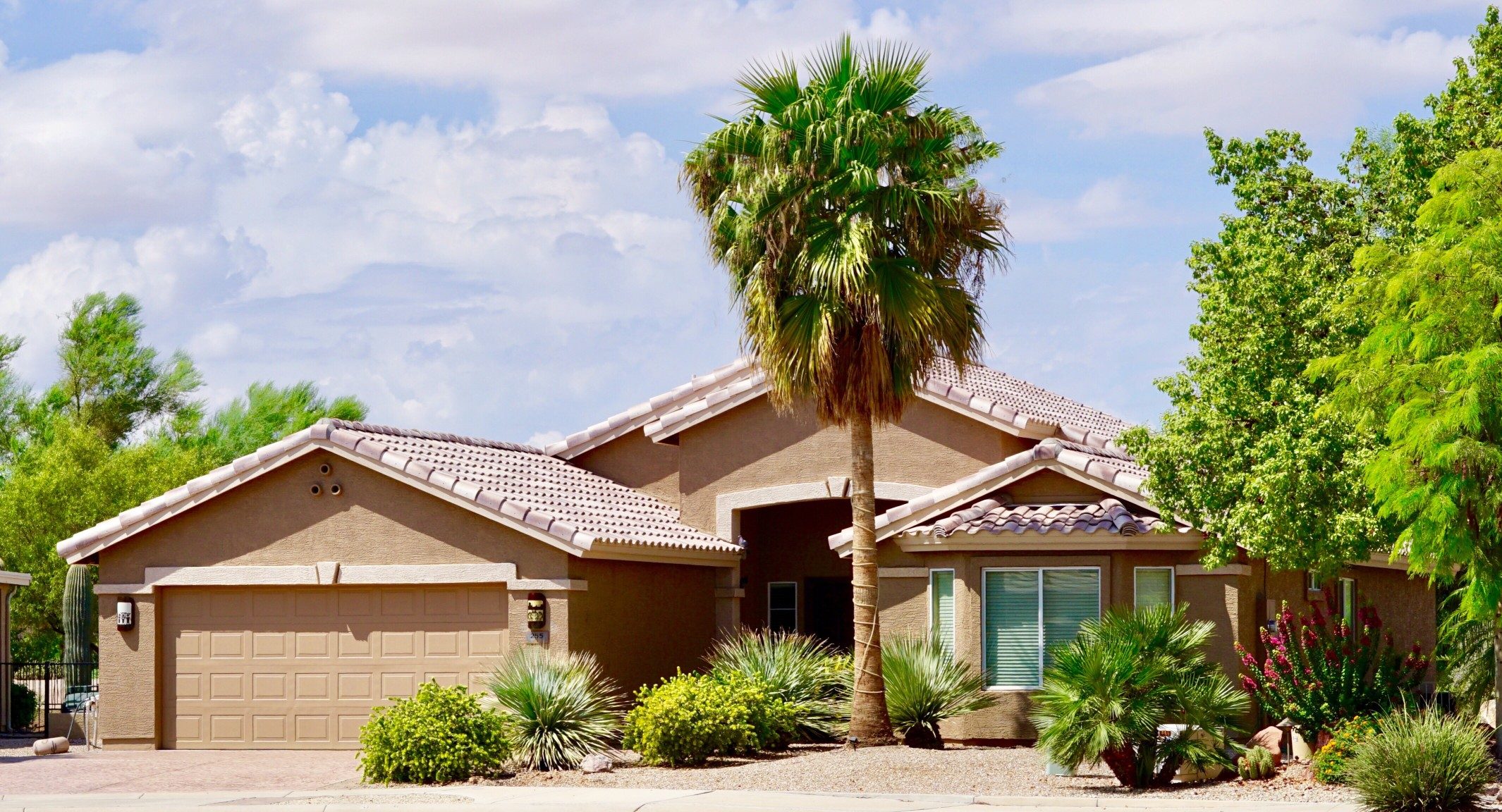
How can you help your trees in the heat?
PLANTING SEASON. First of all, if you are planting new trees onto your property, avoid doing so in the summer. The fall and the spring are the best times of the year to add any new additions to your landscape since they have less extreme temperatures. The ground also tends to be moister in the spring, thus aiding in root expansion. Remember, that roots will go where the nutrients and water supply are, so if a large expansion of the ground around the tree is damp, the roots will have an easier time growing outward.
WATER APPROPRIATELY. Make sure to provide plenty of water for your trees in high temperatures, especially new trees. You need to make sure that the roots do not dry out. The best time to water is in the morning to give the roots more time to soak up the water. As for the amount of water, there is a popular general rule-of-thumb among arborists of providing one gallon for every inch in trunk diameter in the tree’s drip zone. If you do the math, a 2-inch diameter tree will need 20 gallons of water. Yes, that’s a lot of water! At medium pressure, a hose will spray out roughly 10 gallons of water every five minutes. Therefore, to adequately water this tree, it would take 10 minutes! However, we have seen trees thrive without this amount of watering, and we recommend that you gauge how your tree is doing. If your tree appears to be suffering, then water more. But if it is green and healthy, then maintain your current watering amount and schedule. To keep it simple without having to do any trunk measurements and calculations — water deep. This is why slower is better. Rather than watering with a hose, we recommend setting up a drip line or soaker hose under the tree’s drip zone, which is the area under the tree’s canopy. This efficiently maximizes the amount of water that is soaked into the ground and made available for the roots. An excessive shower of water from a hose could just result in wasted runoff. Plus, who wants to hold a hose for an hour to water all of their trees?
Newly-planted trees should be watered daily for the first two weeks after being planted. Then 1-2 times a week for the next 10 weeks. It can take 2-3 growing seasons for a tree’s roots to expand outside of its “comfort zone,” so until then keep the water in fairly close proximity to the tree since the roots are clustered around its root ball. Mature trees only need to be watered twice a month, possibly more during extreme heat.
MULCH. Spreading mulch around trees can be very beneficial, especially for young trees. When a tree is well-mulched, the soil around the tree is slightly cooler in the summer. And since direct sunlight on the soil is prevented with a mulch cover, water retention is improved. When applying, overmulching is possible. A tree only needs about 2-3 inches of mulch. Anything more would absorb too much of the water that is meant for the tree and it could also choke the tree’s roots. However, a proper amount of mulch has many benefits including improving root growth, moderating soil temperature in the heat (as well as in the cold), increasing nutrient levels, and preventing soil compaction.
CAMBISTAT. Arborists nationwide have a brilliant trick up their sleeves. Its name — Cambistat. Primarily used as a growth regulator for mature trees and other plants, Cambistat can reduce tree growth by up to 70% over a 3-year timespan. It works by inhibiting the tree’s growth hormone called gibberellin. By doing so, the tree is able to focus its energy on other aspects, such as fine root growth, which aide the tree in water and nutrient absorption. Other effects include greener foliage, increased disease resistance, and greater heat and drought tolerance. While it seems counterintuitive to use a growth regulator on a young tree, as mentioned before, new transplants don’t grow much above ground anyways in the first couple of years so they can focus on root growth. So having Cambistat applied would only supercharge the much-needed root expansion.

NEED HELP WITH YOUR TREES?
CONTACT LC TREE SERVICE TODAY FOR YOUR FREE ESTIMATE.
The post HELPING TREES IN THE SUMMER HEAT first appeared on San Diego Tree Trimmers – LC Tree Service.
SOARING HEIGHTS WITH TREE TRIMMERS
Ever wonder what it feels like to be a professional tree trimmer? To be up a 100-ft palm swaying with the wind? Yikes! Or to sit atop a tree overlooking the neighborhood? To the adrenaline junkie or someone who abhors the thought of sitting at a desk for eight hours a day, being a tree trimmer is an ideal career. They get to hone in on their inner tree-climbing child for a living, but this time with menacing chainsaws and large trucks and equipment! It may a tiresome and dangerous career, but it sure is exciting!
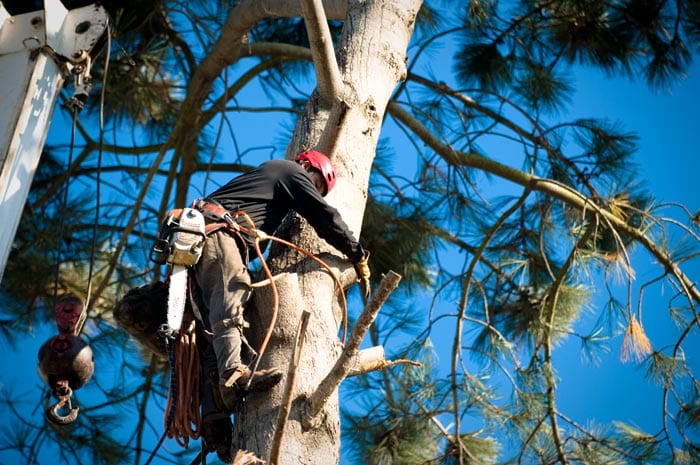
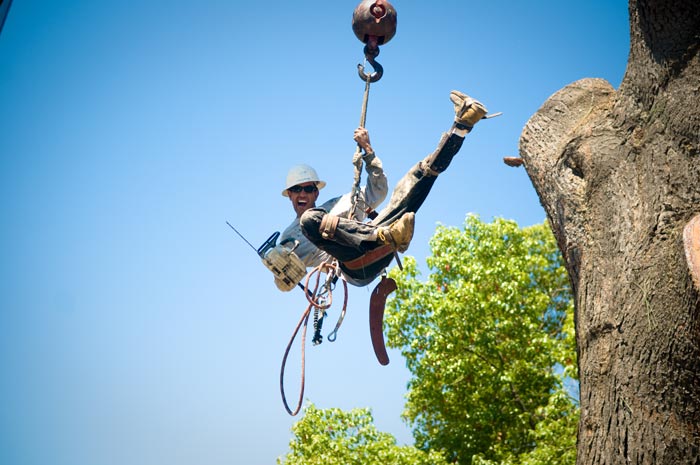
Do tree trimmers have a fear of heights?
When asked about a fear of heights, CEO, Larry Coalson, describes himself not NOT having a fear of heights, but rather a HEALTHY fear. Sitting 40 feet up in a tree doesn’t bother him the way it would your typical person. Even sitting at the edge of a cliff with a 200-ft drop doesn’t paralyze him with fear—unlike other people who get dizzy just thinking about it. Larry, on the other hand, views sitting on the edge of a cliff like sitting on a 10-ft wall. If you sit properly, your chances of falling are unlikely. BUT if you’re acting foolish, dancing along the edge, or just being plain dumb, then yes, you just might fall off!
Tree trimmers trust to some degree the trees that they climb onto. It doesn’t mean, however, that they trust all trees. Some trees can be too hazardous to climb, such as ones that are dead or rotting. Other trees could be too skinny and frail to give even a 50-lb child any sense of security, let alone a 180-lb man with a heavy chainsaw. This is why proper training and experience play a crucial role in keeping a tree trimmer safe, as well as the entire field crew and the property that the job is being performed at.
In San Diego, a couple of local trees that can make a grown man sweat with uncertainty are the lemon-scented eucalyptus and any tall Mexican fan palm whose crown is beyond the reach of a boom lift, so it therefore has to be climbed all the way to the top. Both of these trees (although technically, the fan palm isn’t a tree) grow tall and lanky—even known to soar past 100 feet in height. And not only are they tall, but they’re skinny and flexible. Bad combination for a tree trimmer, who couldn’t care less about swaying back and forth 60 feet up in the air on a tree trunk with a diameter of less than a foot. His only hope is that he’s not too heavy to cause it to snap.
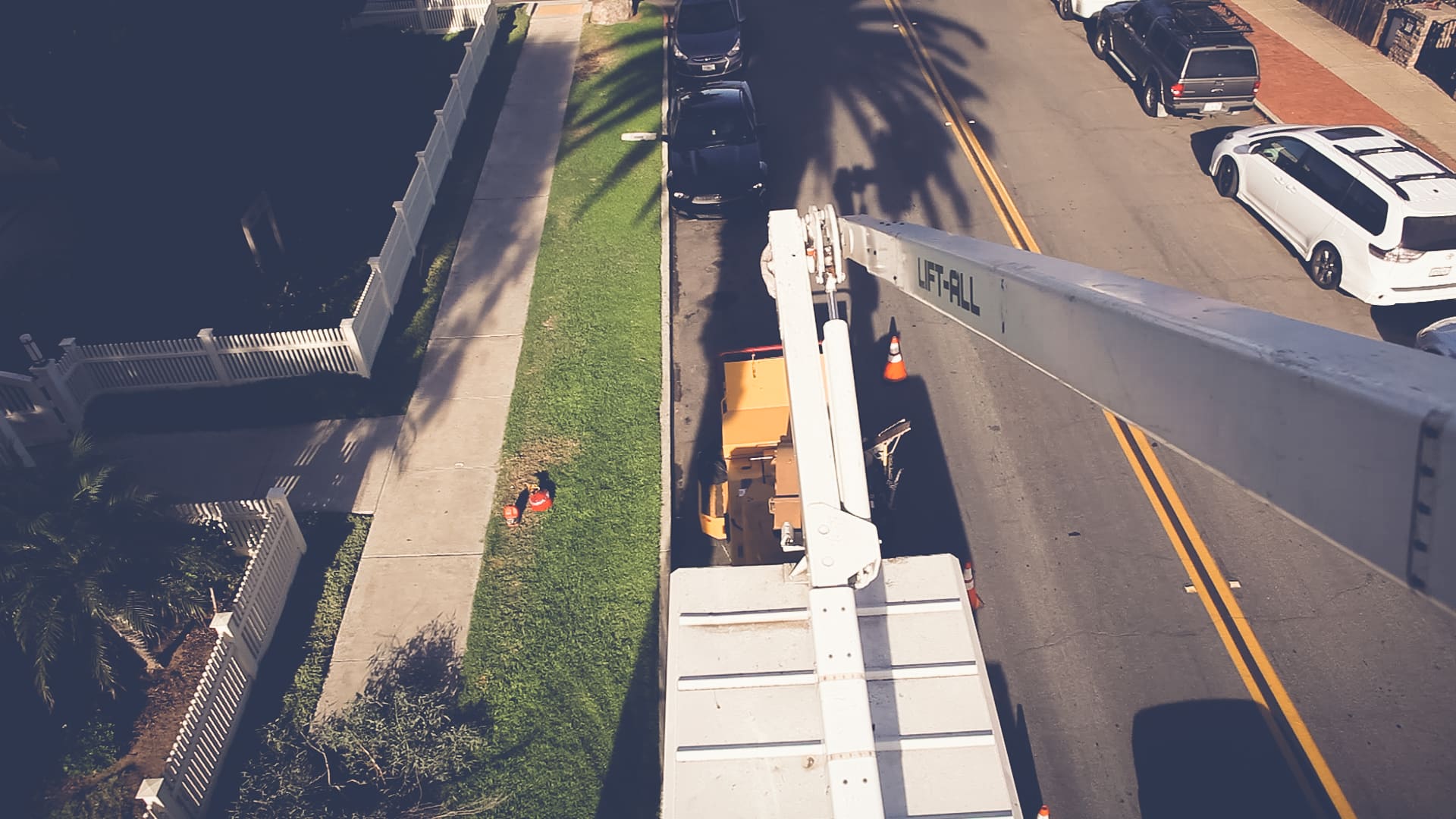
It’s a dangerous job—but someone has to do it!
Almost every tree trimmer goes through some degree of fear on the job—whether it be a minor uneasiness or a serious “I’m about to die!” terror. Practically every aspect of the job can be dangerous on a daily basis. Falling tree parts. Even worse…unexpected falling trees. Hazardous working heights. Dangerous chainsaws. Deadly chippers. Stabbing spikes that go right through the sole of a boot. Stinging bee armies. Electrical lines. And that’s just the tip of the iceberg.
According to the Bureau of Labor Statistics, the tree industry tops the nation’s list of the most dangerous jobs, with falling tree parts and equipment operation injuries being the main culprits for injuries and fatalities. It’s a dangerous job, but someone has to do it! But why would anyone want to put themselves at such risk on a daily basis? While Larry Coalson may not climb trees much anymore, back when he did climb for a living, he loved the daily adrenaline rush. The thought of sitting at a desk all day long made him cringe, but the thought of scaling up a tree for a living gave him a deep sense of excitement. The smell of the outdoors. The array of lurking dangers. The dangling heights that most people never get to experience. It all added to the love of his job—as dangerous as it was.
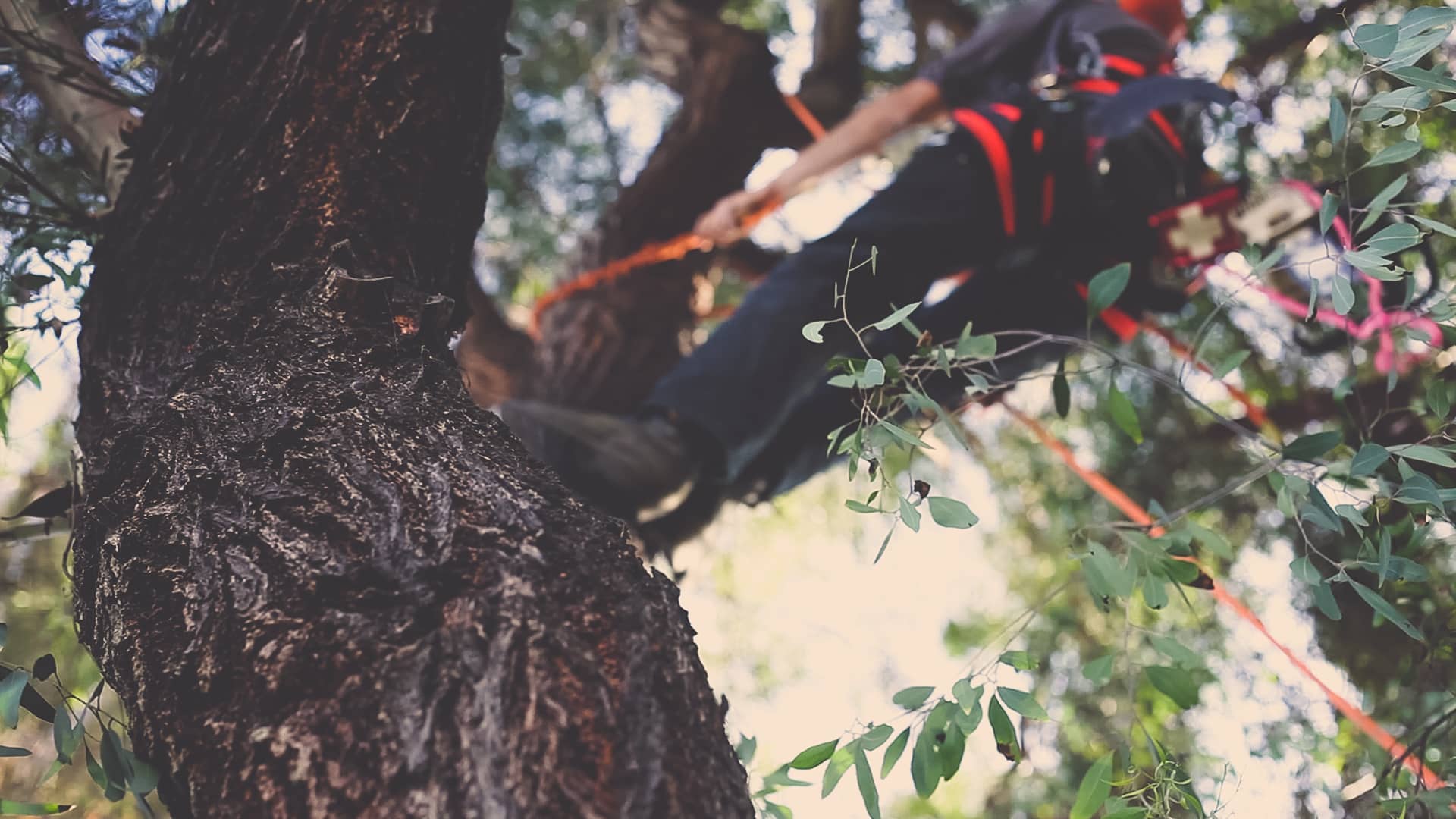
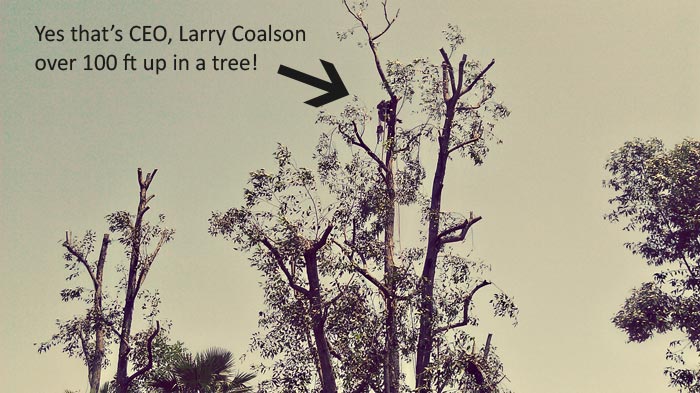
The post SOARING HEIGHTS WITH TREE TRIMMERS first appeared on San Diego Tree Trimmers – LC Tree Service.
IS YOUR TREE INFECTED OR INFESTED?
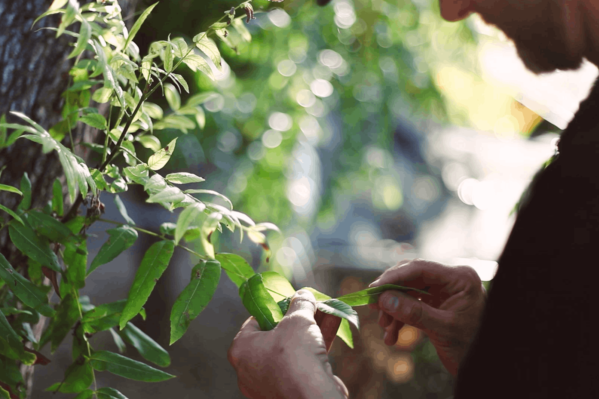
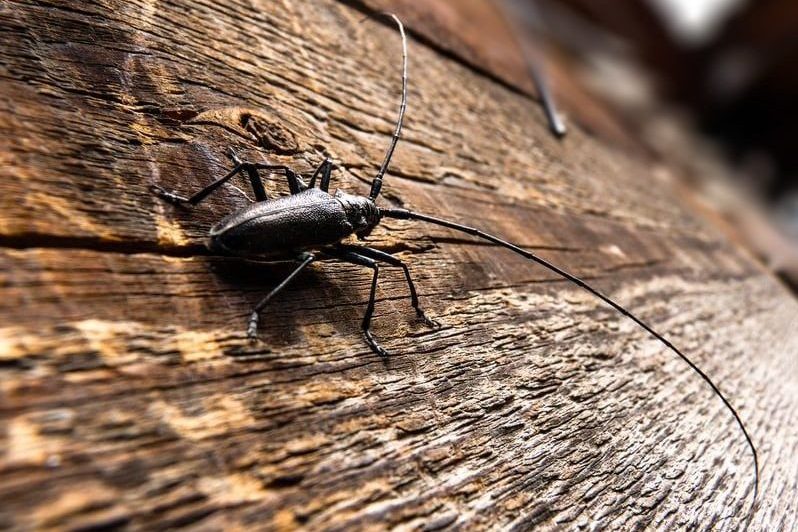
Trees can be a prized addition to any property, especially when they are large, mature, and well-maintained. Most people plant young, smaller trees on their property to save money and simply wait for the tree to grow to an ideal size, since transplanting a mature tree has a hefty price tag! Depending on the size of the tree, it can cost several $100,000. Yikes!
So when your cherished investment that you’ve been watching grow for the past 10 or 20 years starts to show signs of an infection or pest infestation, what should you do? IS there anything you can do to save your tree from further decline? The answer can be “yes” or “no.” The key is early detection. If an invading virus, bacteria, fungus, or pest has penetrated too deeply into the tree’s system, the extensive damage has been done and the only recommendation would be a tree removal. However, if the invaders are caught “red-handed” early on, then controlling, even eradicating them, is much more simple. Thankfully, there are several evident signs that you can look out for.
INFECTION + INFESTATION SIGNS
UNSEASONAL YELLOW OR BROWN FOLIAGE
When a tree is struggling with sickness or infestation, one of first signs that a property owner will notice is the change in the tree’s leaves. Nutrients are being robbed or nutrient absorption is hindered by the damage that is inflicted by the invaders. As a result, the tree’s foliage starts to die back and lose its color. This can be a tricky indicator source for an untrained eye, however, during the fall and winter months, since that is the time of the year when the leaves from deciduous trees naturally die off. Occasionally, we’ve received an inquiry from someone wanting their “dying” tree removed for safety concerns—when really it was winter, and the tree was simply doing what trees do in the winter. When deciduous trees start to go into hibernation, the discoloration in their foliage tends to spread throughout the entire canopy fairly quickly compared to that of an infested or infected tree. You should also note that evergreen trees shouldn’t have patches of browning foliage, as they are meant to stay green all year round. Therefore, using this indicator for evergreens, like pine trees, is more clear-cut than it would be for deciduous trees.

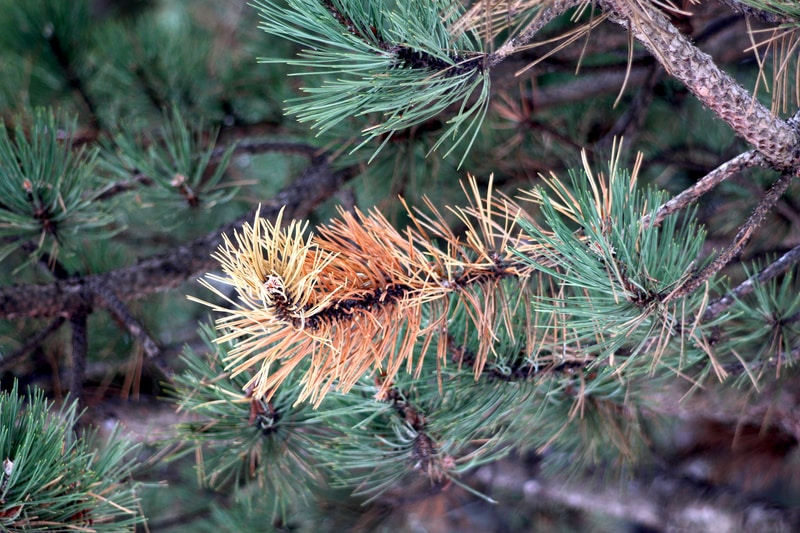
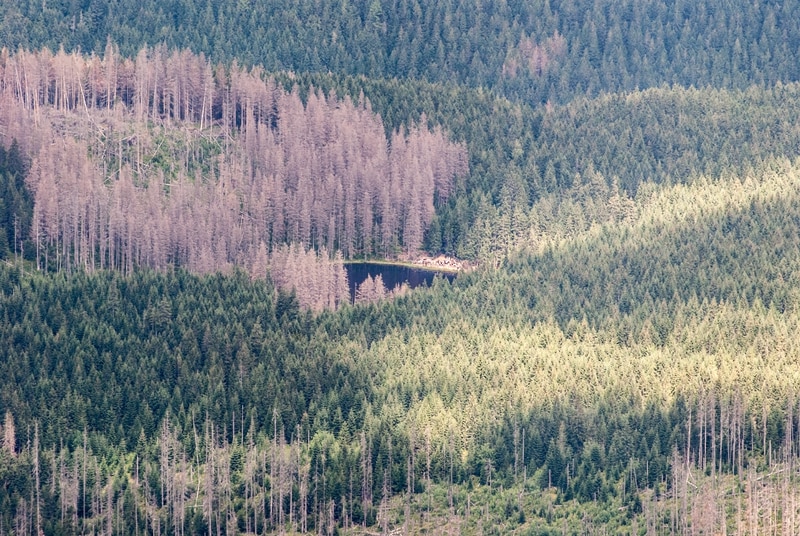
LEAKING TREE
Leakage from a tree is indicative of an injury, which could be a non-issue or a big issue. Anytime a tree loses a limb from a trimming or natural causes, it sustains an injury, which can cause it to bleed or leak sap. Typically, a tree will seal up its injuries—the same way our bodies heal up cuts. However, unlike the human body, trees do not heal—they seal. They do not repair the injury from the inside out, but instead compartmentalize the wound and form new callus tissue around and over the injury.
WETWOOD, or slime flux is a very common bacterial infection found in many trees. Oftentimes it can be found at the crotch of tree due to cracks in the wood or at a pruning site. But sometimes it be found just about anywhere on a tree. The bacteria makes its way into the heartwood and sapwood, typically through root injury. It, then, does its little thing, causing gas buildup. This increase in pressure pushes the sap out through any little crack or weak spot on the tree’s outer layers. Unfortunately, there are no known treatments for slime flux. But thankfully, it’s an infection that isn’t a big deal. Occasionally, it can have detrimental effects on an unhealthy tree—but for the majority of affected trees, it’s harmless.
BORING BEETLES are to blame for many sap leaks found in trees, especially in San Diego’s oaks and pines. Any tree that already has leaking sap is an easy target for these invaders, because it signals an easy entrance in, and it could also indicate that the tree has a weaker defense system. If beetles don’t enter through an already-existing wound, then they’ll eat their way through the bark to make a new home for their upcoming brood of cute little larva babies. Once the larvae are fully mature, they bore their way all the way out of the tree, leaving behind exit wounds or D-shaped holes. If the infestation is new, then the exist wounds may leak sap, which is still a good sign that the tree is still vivacious enough to try to defend itself. However, if a tree contains a number of dry holes that aren’t leaking, then it’s an unfortunate sign that the tree has been under attack for quite some time. The key to avoiding a beetle infestation from killing your tree is early detection. Spot a few holes, your tree may be okay. Spot more than a dozen, then contact LC Tree Service immediately for a consultation and possible treatment plan.
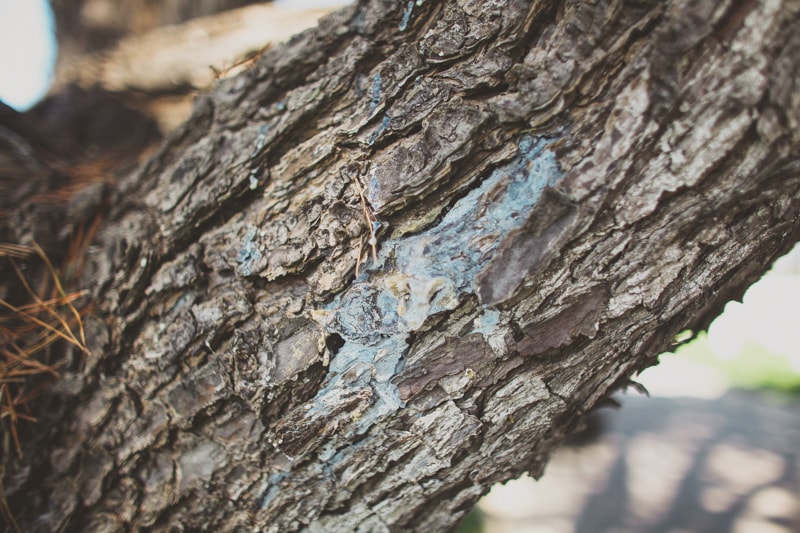
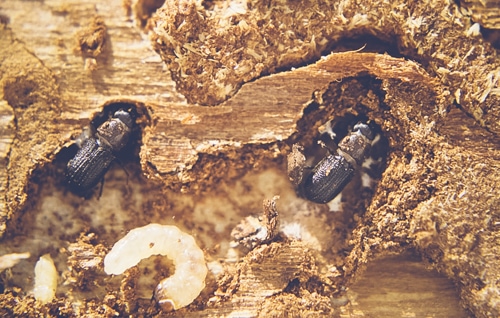
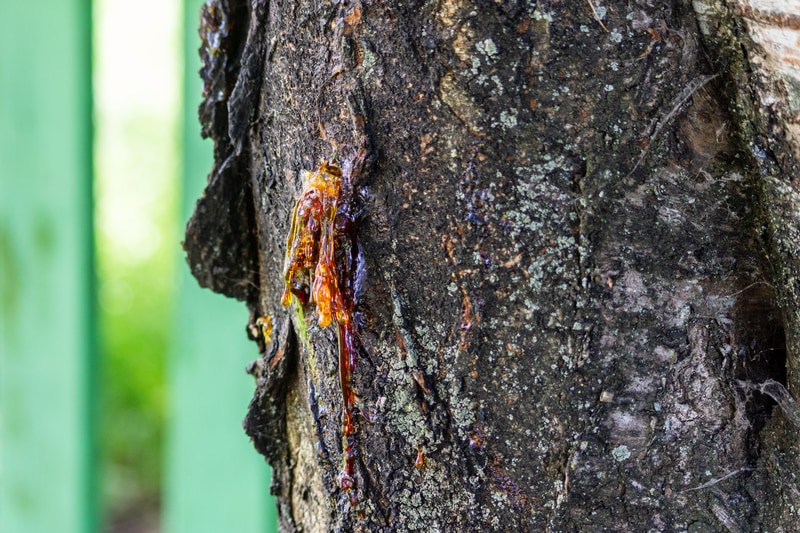
CONKS OR MUSHROOMS
Mushrooms on a plate of spaghetti—a great addition! Mushrooms at the base of a tree trunk—BAD!
Mushrooms, or conks, are the fruiting body of a fungus. While not all mushrooms are equally damaging to a tree, most are an external sign that something detrimental has already been going on internally or underground within the tree’s roots. Some fungi go directly for the roots, while others enter the tree through exterior wounds on the trunk or limbs that are caused by any number of sources, including tree trimming, cracks in the bark, blades from a lawnmower, or any other means of damage. Then the real impairment begins as the fungus releases an enzyme that breaks down the tree’s tissue to begin eating away at a seemingly unending source of food.
If the tree’s roots and/or base have been under fungal attack, then it makes the tree a likely candidate for breaking and falling—or what is known as tree failure. While fungicide treatments can slow down the spread of the fungus, in most cases where mushrooms are present (especially at the base), the tree is beyond repair due to the extensive internal damage that has already been done. If the foundation of the tree has been compromised, then unfortunately, the safest measure would be a tree removal.

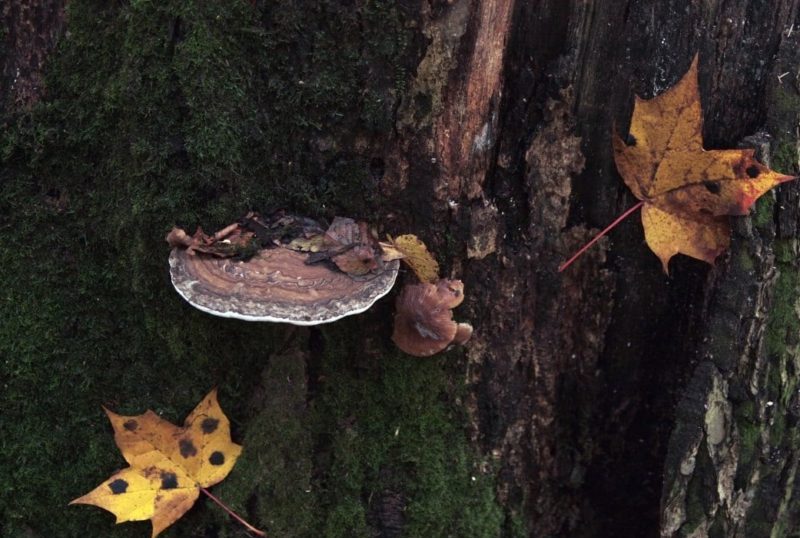
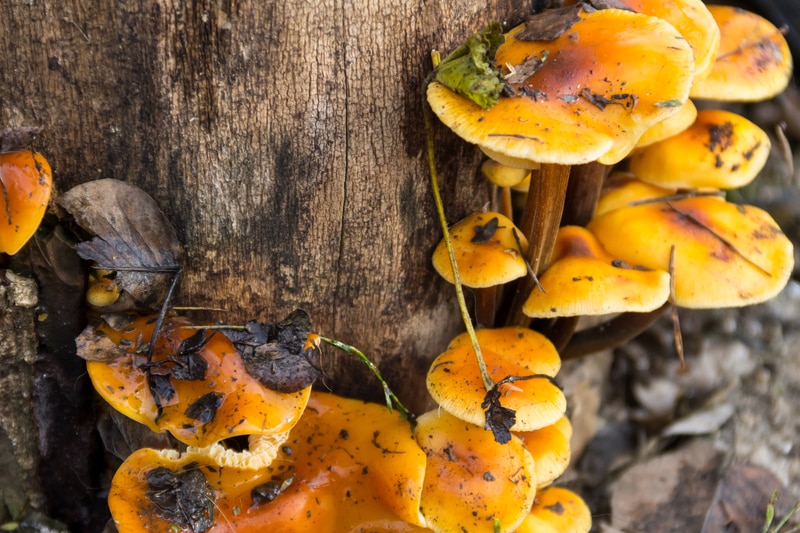
POWDERY MILDEW
If you notice a white powdery substance on your tree’s leaves, have no fear—it is a common fungal disease that is easy to remedy. The powder is the result of airborne fungal spores that spread with the wind to look for new trees to inflict. When a tree has been infected, white to grey fuzzy blotches appear not only on the leaves, but also on the stems and buds. This is a tree infection that is unavoidable in many parts of the world and can strike almost any tree. However, the most preferred tree species include oaks, dogwood, magnolia, maple, azaleas, lilacs, and crape myrtle.
The fungus thrives in humidity and in temperatures above 60 degrees—although it can still be found in arid climates as well. In the winter, it lies dormant, and it is awakened by the warmer spring temperatures. Growing season! New spores are produced in the dampness of the night, which are then carried off during the day by the wind. This process continues as long as the humidity levels and temperatures are high enough.
While the fungi that cause powdery mildew are hard to avoid, there are steps that you can take to prevent your trees from being infected.
- Plant trees in areas with plenty of sunshine to aide in keeping its foliage dry.
- Avoid wetting the foliage in the late afternoon.
- Keep trees well-trimmed to help increase air circulation and light penetration.
- Plant trees with plenty of space in between trees to help avoid cross-infection.
- If planting a new tree, consider a less-susceptible tree species.
Fortunately, this fungus is one that can be controlled with proper fungicide. Please contact us, if you notice leaf powder on your trees to avoid spread and leaf distortion.
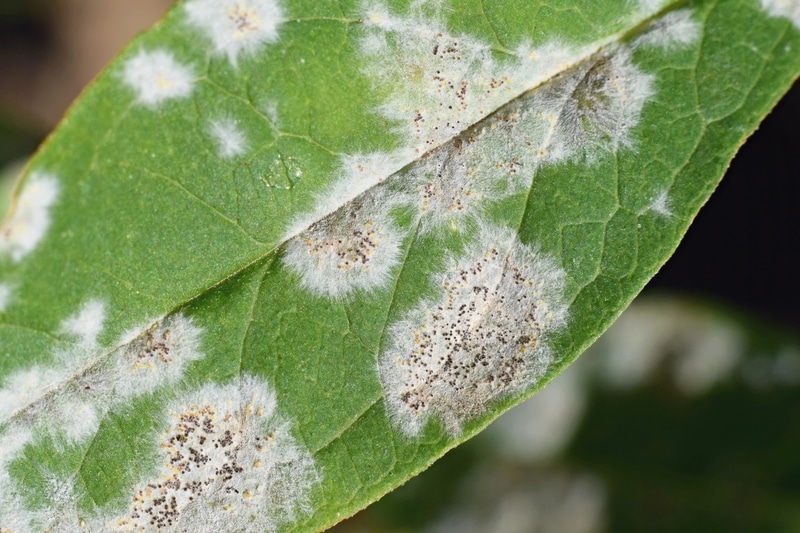
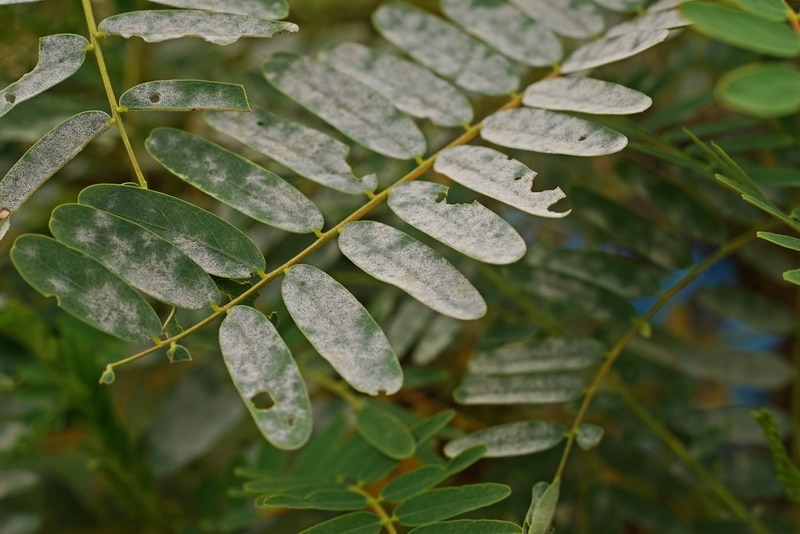

LOOSE BARK
All trees shed off their bark and crack to some degree. It’s simply their natural process of growing out of their skin. It could even just be the tree suffering from extreme elements, such as frost or extreme heat—in which some tender love and care to bring them back to a healthy state.
Some trees shed more than others, like the melaleuca tree that is so common to see in San Diego. This is a local tree that is ALWAYS shedding off its bark in a unique fashion that looks like paper peeling off, hence giving it its nickname—the paperbark tree. The various eucalyptus trees around the city are also notorious for molting. However, if a hardwood tree such as a pine has loose bark that comes off with a slight tug, then there is an underlying issue that should be inspected by a tree professional.
To better decipher whether your tree is going through its normal exfoliation process, look to see if there is a layer of fresh bark behind the shedding layer. If so, then that is a good sign that your is simply shedding. But if you see bare wood that has a fuzzy fungus or lighter-colered wiggly lines, then you have an issue. Your tree is suffering from either a fungal infection or a beetle infestation.
DISEASE. A common culprit for peeling bark on trees is a fungal disease called Hypoxylon canker. Its most popular victim is the oak tree, although different
Hypoxylon species will affect different host trees of choice. Being a fungus, it spreads through aerial spores, but will only cause harm to weak and stressed trees that are easy prey. Healthy trees typically have no issue defending themselves against Hypoxylon. In fact, many healthy trees already have the fungus on their outer bark, but they won’t be affected unless their natural defense mechanisms are compromised by factors such as malnutrition, drought, heat, insect attacks, etc.
Unfortunately, there is no known cure for Hypoxylon canker. Because the fungus lives in the interior of a tree, once the infection become evident from the outside, the irreversible damage has already been done. The typical protocol would be a removal of infected limbs or removal of the entire tree, especially if the fungus has affected the trunk.
BEETLE INFESTATIONS are a common cause for loose bark, especially with the pines in San Diego. The beetles feed mainly on the tree’s sapwood located just beneath the bark. This eventually causes the bark to loosen up and fall. Boring holes in the trunk are a tell-tale sign that the tree is infected with beetles, but for curiosity’s sake, if you wish to see their burrows, you can try peeling off a section of the bark—which will uncover a chaotic mess of the beetles’ burrowing lines. Take note though that if you are able to peel off the bark that easily, then the tree is beyond saving.
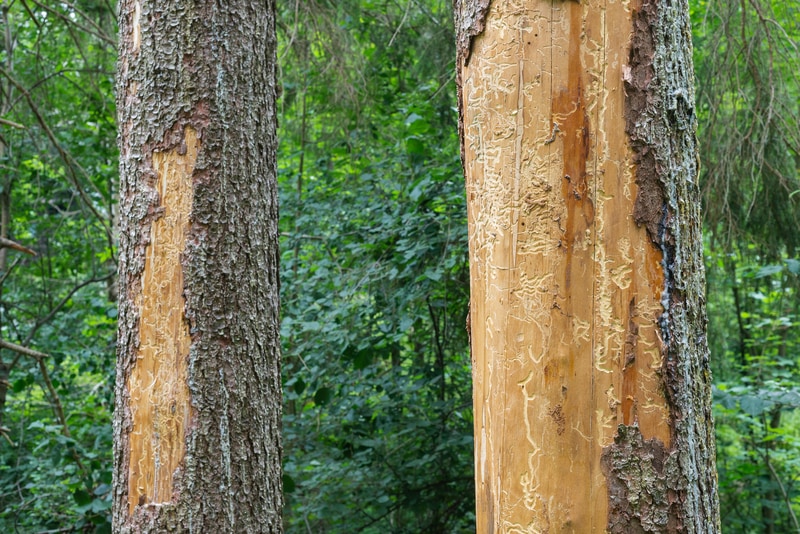
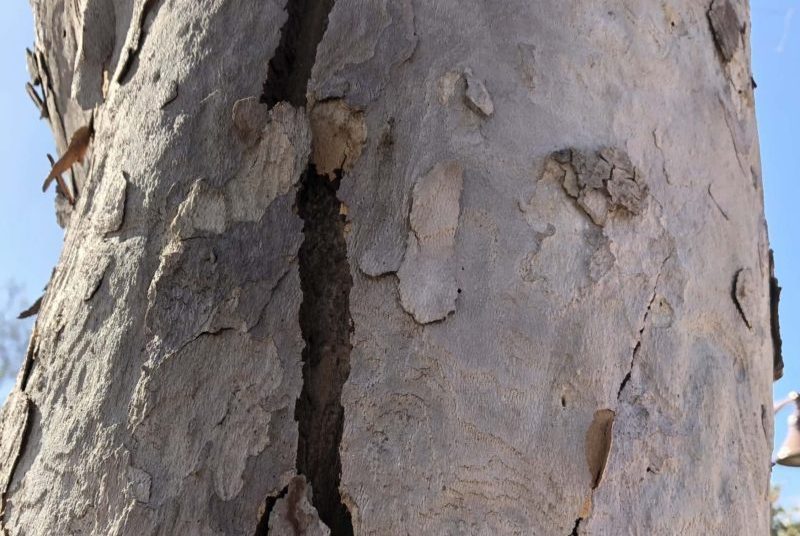
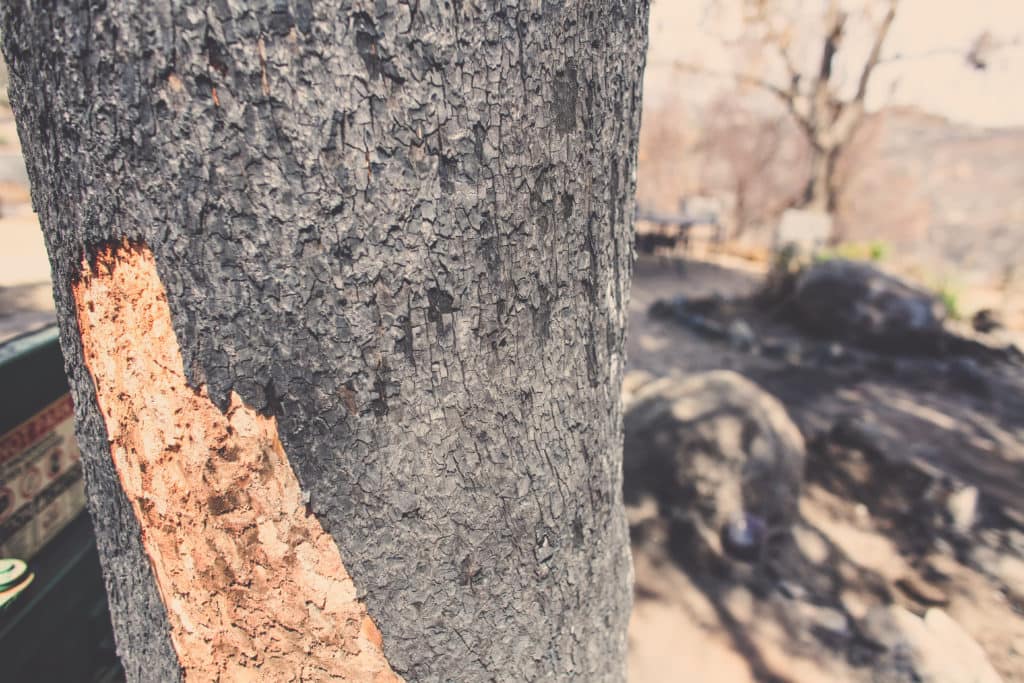

IF YOU HAVE AN INFESTED OR INFECTED TREE,
PLEASE CONTACT LC TREE SERVICE IMMEDIATELY
SERVING ALL OF SAN DIEGO COUNTY
The post IS YOUR TREE INFECTED OR INFESTED? first appeared on San Diego Tree Trimmers – LC Tree Service.
